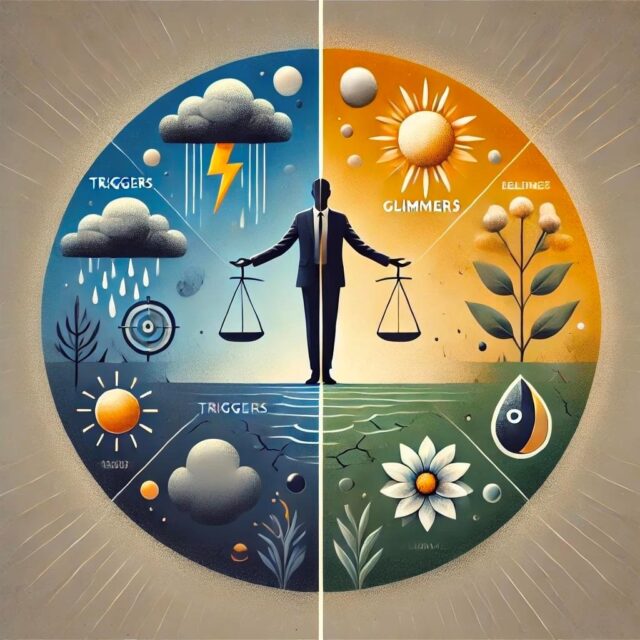
Author: Andrea Jayatilleka
In the ever-evolving landscape of leadership, emotional intelligence (EI) has become more than just a desirable trait—it is a critical skill. As leaders, we constantly navigate a complex web of emotions, both our own and those of our teams. While most of us are familiar with the concept of triggers, how many of us are aware of glimmers? Understanding and managing both can significantly enhance your effectiveness as a leader.
Triggers are stimuli—situations, words, or behaviours—that elicit strong emotional reactions, ranging from irritation and anger to fear and anxiety. These reactions often stem from unresolved issues, past experiences, or deeply ingrained beliefs. For example, imagine you are leading a meeting, and a team member questions your decision in a way that feels confrontational. This may trigger feelings of inadequacy or frustration, potentially leading to an emotional response that could derail the discussion.
Triggers can profoundly impact leadership effectiveness. When triggered, leaders may react impulsively or defensively, leading to decisions that are misaligned with their values or the best interests of their team. This can erode trust, create tension, and ultimately result in poor outcomes.
Managing Triggers:
- Self-Awareness: Recognise your triggers and understand their origins. This awareness allows you to pause and choose a measured response rather than reacting impulsively.
- Emotional Regulation: Develop strategies to calm yourself when triggered. Techniques such as deep breathing, mindfulness, and taking a moment before responding can help maintain composure.
- Reflect and Learn: After a triggering event, reflect on what happened. What can you learn from it? How can you handle similar situations better in the future?
Glimmers are the emotional counterbalance to triggers—small moments that evoke positive feelings, such as joy, calm, or connection. They are the emotional equivalent of catching a ray of sunlight on a cloudy day. Whether it is receiving a spontaneous note of appreciation from a team member or witnessing a breakthrough moment during a coaching session, these glimmers can uplift your mood, enhance your sense of purpose, and foster positive energy.
Glimmers are powerful because they can shift your emotional state and perspective, even in challenging situations. They help you stay grounded, optimistic, and resilient. By intentionally seeking out and savouring glimmers, leaders can cultivate a more positive and productive work environment.
Cultivating Glimmers:
- Mindful Awareness: Pay attention to small positive moments throughout your day. Recognise them as glimmers and allow yourself to fully experience the positive emotions they bring.
- Gratitude Practice: Regularly reflecting on things you are grateful for can increase your sensitivity to glimmers, making it easier to notice and appreciate them.
- Positive Reinforcement: Share glimmers with your team. Acknowledging and celebrating these moments can build a culture of positivity and resilience.
Balancing Triggers and Glimmers:
Leadership is about balance. While it is crucial to manage triggers to prevent negative emotions from dominating your actions, it is equally important to seek out and amplify glimmers to nurture a positive emotional state.
When we practise being present in the moment, we can expand the energy field around us. Conversely, reacting impulsively to triggers draws energy from this field, causing it to shrink. By staying present and sustaining elevated emotions, we can broaden our magnetic energy field, allowing us to exert more positive influence on our reality.
How we think and how we feel impacts every aspect of our lives. It takes training and practice to cultivate a balanced emotional state. Life is about managing energy—where you place your attention is where you direct your energy. The emotion you feel is the magnetic charge, and your intention is the information carried within that energy. When we combine a clear intention with an elevated emotion, we create an energy field of wisdom and awareness.
In leadership, understanding and balancing triggers and glimmers can make all the difference in how you lead, influence, and inspire.

